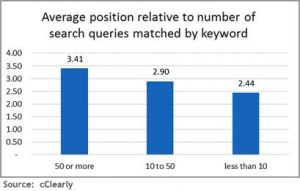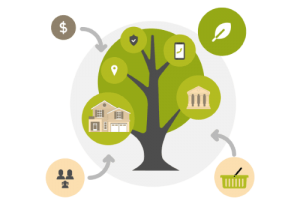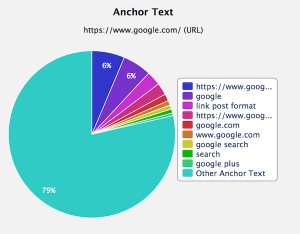— October 25, 2017
Social media marketing can be pretty. Damn. Tough.
But you don’t need me being a “Negative Nancy” about it. You’re here reading this blog because you want to succeed.
Social media marketing tricks and techniques are abundant. But if you don’t know what’s happening right now then you may be wasting your time.
In this article, I’ll outline four social media metrics you should be measuring. You’ll learn how to measure them and which to focus on. I’ll even give you actionable tips on how to do so.
Let’s get stuck in!
1. Monitor audience growth with “volume”
While not the most important metric, volume is still key when understanding the impact you’re making on social media.
Simply put, volume measures how many people are talking about your brand (or content and industry) on social media. How large is the conversation around your brand? Are people talking about your industry/offering? These are questions volume can help answer.
Volume is a little more complicated than just counting mentions in tweets and hashtags. Not only should you be measuring how many posts and messages there are around your brand, but also how many people are talking about you.
On Twitter, there are three ways to do this:
- @Username: This one is easy. When people attribute your username in a tweet, you’ll get a notification. Usually attributed as a “Twitter mention.”
- Brand mentions: Similar to the above, but without “tagging” your username. Notifications won’t appear when this happens and can be a problem when people share your content, but there are tools that can monitor these mentions.
- Hashtags: A common way people talk about your brand, especially if your industry knows you well. These can also include hashtags related to events, products, and campaigns.
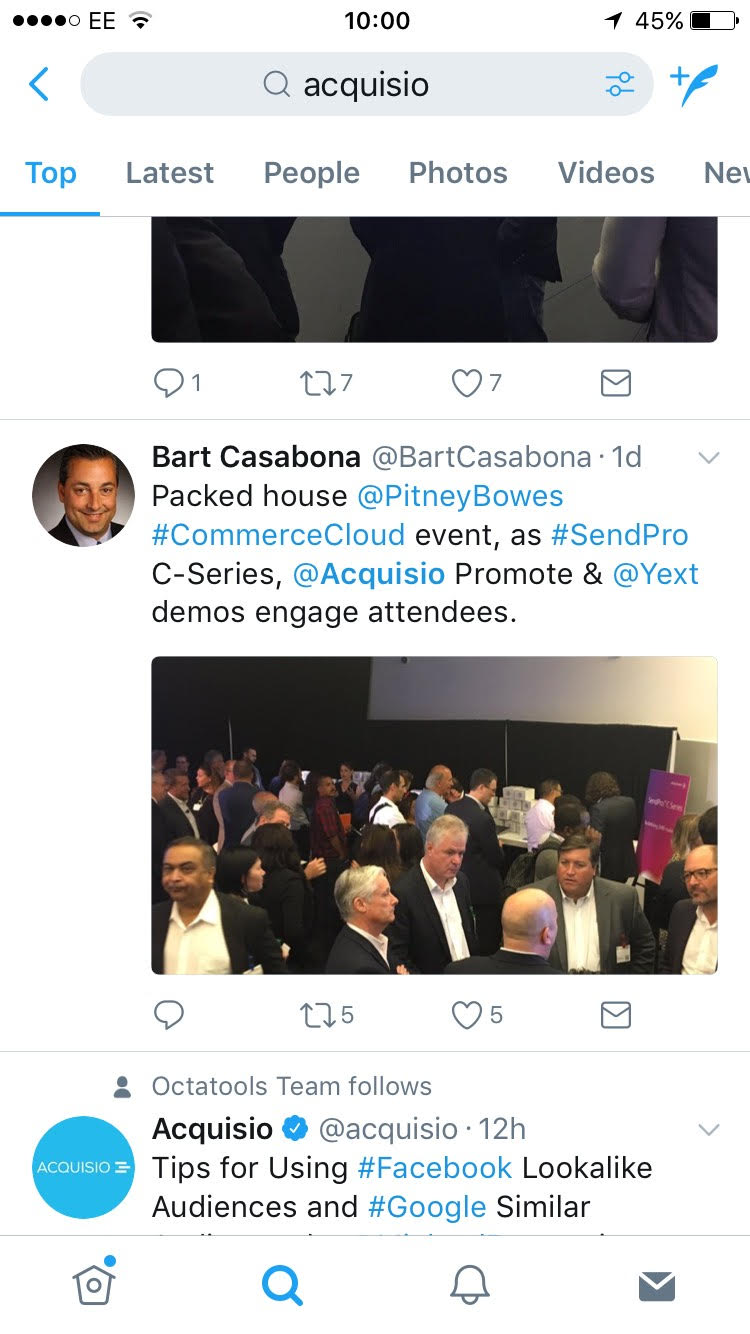
Improving volume, or “social mentions,” relies heavily on your other marketing and content efforts. If your audience isn’t talking about you, perhaps you need to refine your messaging. Try testing different messaging before going all-in on one. See what your audience resonates with best.
Perhaps your content isn’t striking the right chord. Go back to the beginning and see what your audience wants. Do they prefer visual or written content? In-depth guides or short (perhaps humorous) videos? Customer development can help you find the answers.
Using a tool like Ahrefs can help you measure inbound links to your site. While this may seem irrelevant to social, it can help you uncover your most popular content. You can also do this with Google’s search console:
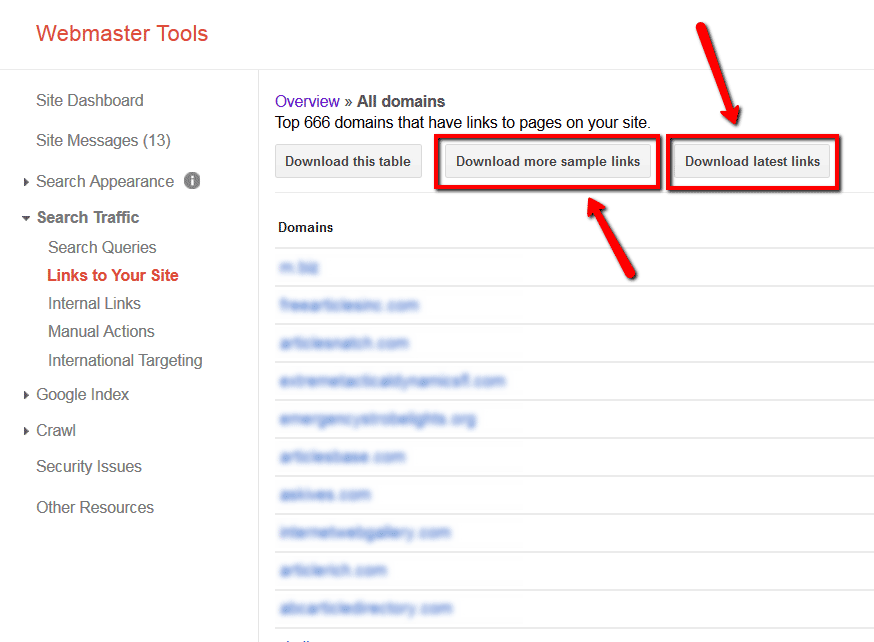
Source: Linksearchtools.com
Identify the content that resonates best around the rest of the web, and then make a special effort to promote it on social. Use organic and paid amplification to ensure your message reaches as far as it deserves.
2. Amplify Your Message With “Reach”
While volume measures how many people are talking about you, reach measures how many people have seen the content you distribute.
Reach, therefore, is a great indicator of your potential audience size. It measures how far your content and message spreads across social media. For example, on Facebook, “total reach” is an indicator of the number of people who have seen your post.
Reach is calculated when your content appears on somebody’s news feed. This metric comes in three different flavours:
- Organic Reach: The number of people who saw your post/tweet in their feed. A metric that is becoming harder to maintain, as various social algorithms give more value to posts shared by friends, family and followers.
- Viral Reach: As touched upon above, this indicates how many people have seen your content as a result of social sharing.
- Paid Reach: The number of people who saw your content through a promoted social post.
Paying for promoted posts has become a popular amplification method due to the challenges of organic reach:
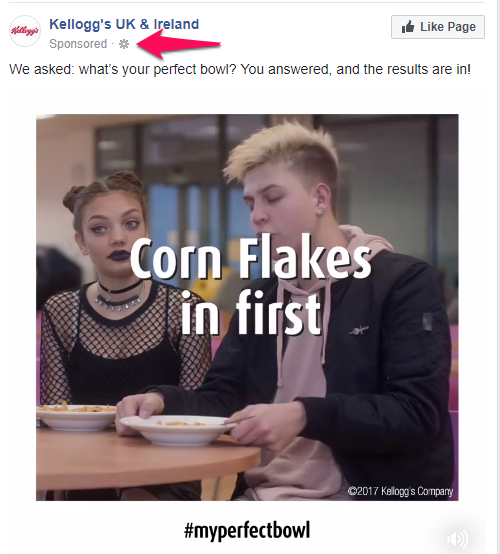
Of course, budget can be an issue. You must ensure you get the best results from each advertising dollar. Therefore, it’s best to test content organically before promoting it further using paid social advertising platforms.
Let’s say you share ten blog posts to your Facebook and Twitter followers. Of them, two generate the best click-through rate, plus a spike in social shares. As those pieces of content resonate best with your audience, you can confidently promote them through promoted social posts.
You then want to ensure you’re spreading this content to the right people. Targeting is key, and you want to get content in the hands of people who are just like those who have already expressed interest in it.
On Facebook, this is where custom and lookalike audiences come in. Here’s a breakdown of both:
- Custom Audiences: Upload your list of customers or subscribers, and Facebook will generate targeting based on their demographics and interests, assuming these customers have associated those email addresses to their profiles.
- Lookalike Audiences: Use the data from your existing fans and post engagement to target similar individuals.
With your targeting set up, it’s time to get creative with your messaging. You should start with the same copy and imagery you used when sharing the content organically. But it’s important to test new approaches to ensure you’re getting the most out of your content.
While promoted posts can help you get quick wins, you must also optimize for organic reach. Here are some quick & actionable tips to help you do this:
- Optimize your Profile: Use your target keywords in all social profiles to increase discoverability. Make sure the description of what you do/offer is clear.
- Be Personal: Using stuffy language on the internet has been dead for a long time. But it’s still key to keep this in mind. Make sure your correspondence – both in your posts and 1-to-1 engagement – sounds like a conversation someone would have in real life.
- Share the Right Content: Post educational and entertaining content that adds value to people. Overly-promotional posts rarely generate engagement.
- Empower Advocates: Some of your followers are bigger fans of your content than others. Identify customers who love your work and empower them to share your content.
- Curate: Share content from other brands. Curation provides an opportunity to build relationships with other brands and increase your visibility.
3. Build Trust and Nurture With “Engagement”
Engagement is, by far, the most important social metric of all. This measures how people are interacting with your brand and content across all social networks.
Engagement measures the actions taken on your posts, tweets and stories. For example, on Facebook, engagement is measured by comments, likes, and shares. On Twitter, this would translate to retweets and replies.
The more engagement your posts receive, the higher your viral reach is likely to be. And while it’s easy to see these actions as single events, they should be an indicator of long-term relationships with your audience.
High engagement means your audience knows and trusts you. It’s an indicator that you’ve created a community around your brand.
When measuring engagement, pay attention to these granular metrics:
- Likes and Shares: The easiest metrics to track. From Facebook to YouTube, liking and sharing are universal actions users can take to express appreciation for content.
- Audience Growth: The number of followers you’ve gained over a specific period. Monitoring the rate your following grows can inform your posting schedule and cadence.
- Followers / Following Ratio: Your follow ratio indicates your credibility on social media. If you follow 500 people but only 90 follow you, it may turn people off from following you.
- Audience Mentions: As mentioned earlier, users who mention you can help identify most engaged members of your audience (not to mention boost your overall reach).
To boost engagement, you must share engaging content. 82% of Twitter users watch video on the platform, meaning you should consider adding video to your content arsenal (if you haven’t yet done so).
How-to videos that teach your audience how to do something work very well, as do entertaining videos that spark some form of emotion. Tasty by BuzzFeed do a great job of this by making their videos both educational and interesting to watch:
Video content can also be repurposed across several networks. A 7 minute long YouTube video can be repurposed into several, shorter clips for Facebook and Twitter. You can then use shorter clips as a sneak peak on Snapchat and Instagram Stories.
Whether you record several clips on your mobile phone or hire a full production agency, all that matters is you tell a compelling story.
4. Inspire Action With “Influence”
Last but not least, there’s influence. The influence you have over your audience, as well as the impact those who are talking about you have over their own audience.
While this can be a controversial indication of social success, nobody can deny its importance. In fact, many believe the influence you have over your audience is far more important than the size of it.
There’s no universally agreed method of measuring influence, but there are reliable sources. Klout, for example, is a great tool for measuring your own influence, as well as that of your peers and competitors:
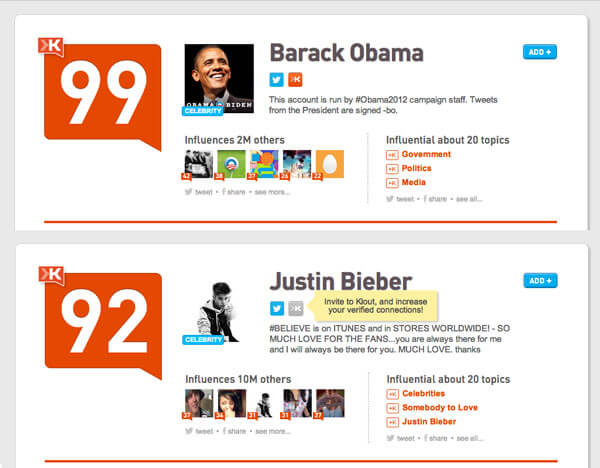
Source: Hermish.com
Increasing your influence is a long game. It means consistently driving value for your audience and providing a platform for inspiring conversation.
This means starting this conversation yourself. You need to get into the “dirt” and engage with your followers. Reply to their messages and tweets, offer a helping hand and generally talk to them like a human being.
You should also be doing this with other influencers in your space. Not just on social either, but in the other communities they engage with. Commenting on the content they create and share can also drive value.
Run contests and events that encourage your followers to get involved. Learn how people use certain hashtags and create content around those topics. Joining in on Twitter chats can be a great way to quickly find new followers.
SEMrush host weekly conversations under the hashtag #semrushchat to spark conversation around a specific theme:
A1: #semrushchat I also imagine the top 1% have ungodly budgets and can just shove their way into markets as they see fit. pic.twitter.com/voTq6DBke6
— Colt SebastianTaylor (@ColtSTaylor) September 13, 2017
They then take these insights and create blog posts out of them, making sure this user-generated content goes the extra mile for them.
These examples should get your creative juices flowing. The overarching theme is the value they deliver and the conversations they inspire. Your content and messaging should do the same.
Wrapping it up…
There are dozens of metrics that indicate your social media success. Clicks, conversions and ROI are a marketer’s true north, but are useless without the stepping stones outlined in this article.
There are many methods and tools to measure these metrics (Mention of course being one of them). No matter how you measure them, it’s important to have a process in place to improve them.
Which metrics do you measure your social success by? Share your experiences with us in the comments below.
Digital & Social Articles on Business 2 Community
(70)


